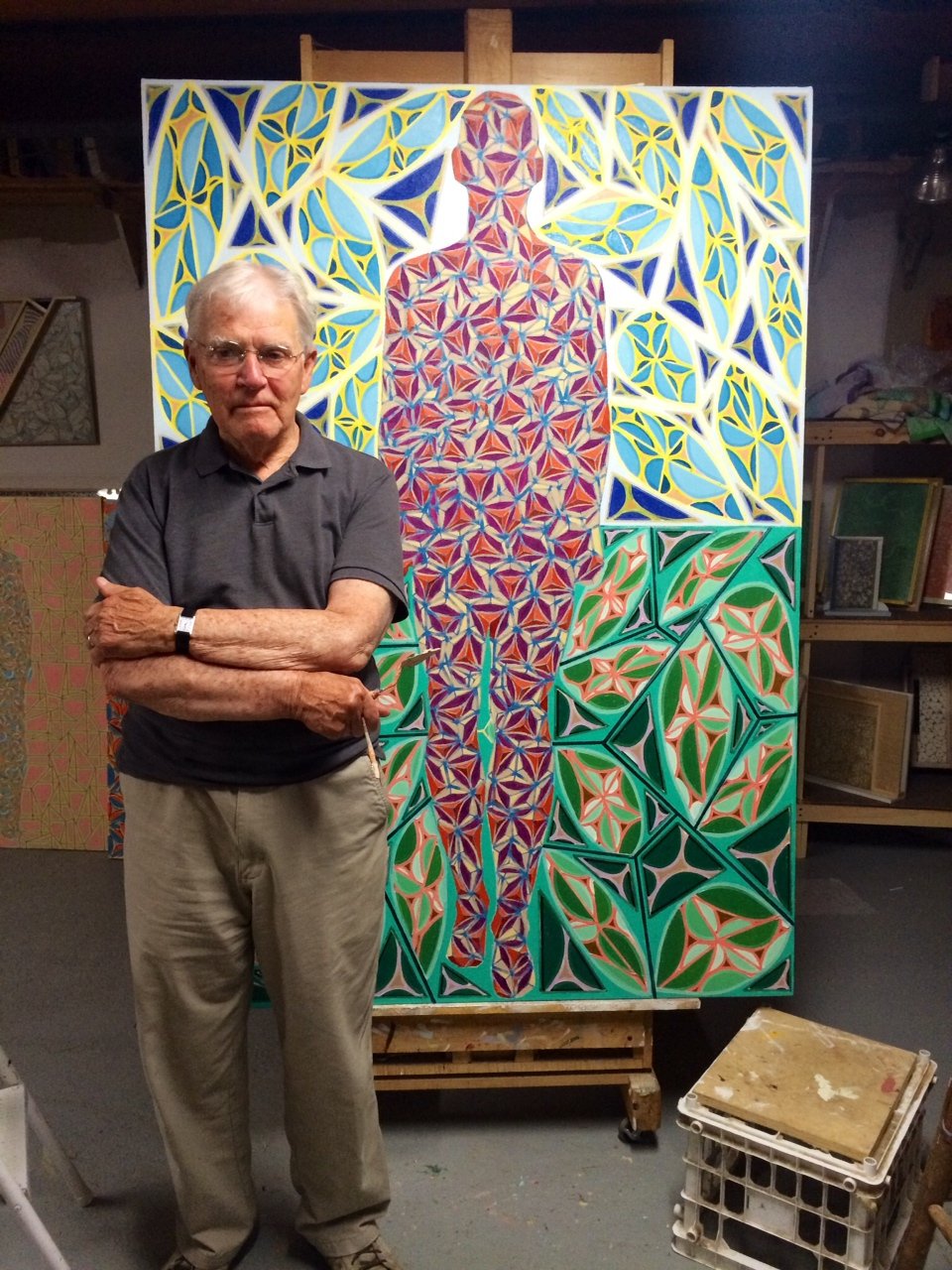
Frederick Lynch is a celebrated Maine-based abstract artist whose varied body of work includes paintings, drawings, prints, and, in his most recent endeavor, painted and incised wooden reliefs and freestanding sculptures called “Capriccios.” His art is ruled by his use of repeated geometries and mathematical divisions, referencing patterns found in nature such as cellular structure or the veins on a leaf. In 2012, Lynch was one of five artists chosen at the Center for Maine Contemporary Art’s “60th Anniversary Honors Exhibition” for his role in advancing contemporary art in Maine. His work has been exhibited throughout the New England area and the US, including at the Portland Museum of Art Biennial and at McGowan Fine Art in New Hampshire. Lynch teaches at the University of Southern Maine.
When did you know you wanted to be an artist?
My father gave me a small (3 x 3 x 1 in.) block of note paper from an old stationery box when I was six or seven. Bedridden and recovering from one of those old-fashioned childhood illnesses (mumps, measles, etc.), I started drawing with abandon, without a care about ‘wasting’ paper.
Frederick Lynch, Segment 77 (from “Divisions” series)
Photo courtesy of fredericklynch.com
What inspires you?
Rich, thoroughly produced painting or sculpture that speaks of humanism and the human condition, be it abstractly or realistically accomplished.
Frederick Lynch, Three Gardens
Photo courtesy of fredericklynch.com
If you could own any work of modern or contemporary art, what would it be?
The Grand Armada (IRS, No. 6,1X), 1989, by Frank Stella.
Frederick Lynch, Capriccio #5
Photo courtesy of fredericklynch.com
What are you working on at the moment?
A series of paintings that seek to combine the human form (specifically mine) with the elements of abstraction found in a process of division that I have been dealing with for the past 12 years.
When not making art, what do you like to do?
Keep warm, follow the sun, explore the coast of Maine, compile images of shapes and forms for future use.